SALE! [Day trip/Pick-up from city hotels] Nanki Shirahama Onsen/Popular cat stationmaster--Kishi Station/Senjojiki
- Beginners welcome - First try
- Empty-hands OK
- Pick-up & Drop-off
- Solo participant
- Operate rain or shine
- Children welcome
- Activity Japan 2024 Fall Sale
-
Possible number of bookings1~49
-
Participating age1Age ~ 70 Age
-
Duration5~6 hours
Boarding and alighting at the meeting point 08:40 ▼Nihonbashi Station, Exit 2 (Namba-Shinsaibashi area) 07:30-08:30 ▼Pick up at hotel or guesthouse, hotel or guesthouse on the Osaka Loop Line 10:00 ▼Popular cat stationmaster -- Kishi Station (approx. 60 mins) 12:30 ▼Shirahama Toretore Market -- One of the largest seafood markets in western Japan (free time to stroll and have lunch / approx. 120 mins, food costs at the customer's expense) 14:45 ▼Senjojiki (approx. 30 mins) As its name suggests, Senjojiki is a large rock formation reminiscent of a wide rock formation. The white, soft rock jutting out from the tip of Setozaki toward the Pacific Ocean in a slope is a large rock formation made of sandstone formed 18 to 15 million years ago, and has been eroded by the rough waves crashing on the shore to create a magnificent landscape. The sunset sinking into the horizon is truly a "breathtaking view." 16:00 ▼ After enjoying the day's sightseeing, we start heading back. 18:30 ▼ Shinsaibashi, Dotonbori area (free time / about 1 hour) Guests can play in the Shinsaibashi area of Osaka for about an hour. Once you're done playing, the tour will end in the Shinsaibashi area. Guests who don't want to play can disband directly in the Shinsaibashi area.
Kishi Station is the terminus of the Wakayama Electric Railway's Kishigawa Line, famous for having a cat stationmaster. On the platform, Tama, the first cat stationmaster, greets you from Tama Myojin Shrine as the honorary permanent stationmaster. Tama is a female calico cat. She was originally kept at the Kishi Station shop, but in 2007 she was officially appointed stationmaster, and was featured in the news. Currently, Nitama has taken over as the second stationmaster, and Yontama acts as stationmaster on Nitama's days off. The cute station building, which looks like a cat's face, is also popular for its shop selling Tama goods and its cafe selling gelato and drinks. The Kishigawa Line trains are unique in appearance and interior, including the Tama train, which is full of cute illustrations, and the stylish Strawberry train. This is a spot that cat lovers and families can enjoy. (Note: Yontama acts as stationmaster on Wednesdays and Thursdays, which are Nitama's public holidays.) (You can experience the train at your own expense, with the fare of 190 yen per station.)
Nanki Shirahama is a seaside town in the southern part of Wakayama Prefecture. As the name suggests, it is a tourist destination with Shirarahama, a famous white sand beach. Being a seaside town, there is an abundance of fresh seafood, and tourists enjoy its bounty in the form of dishes and processed products for souvenirs. Toretore Market Nanki Shirahama is a place where you can see, taste, and buy dishes, processed products, and even fresh fish all at once, and then go home satisfied. At Toretore Market Nanki Shirahama, a "tuna cutting show" is held two or three times a day (between 11:00 and 14:00) (please note that the tuna cutting show may be canceled due to special circumstances), where a large whole tuna is skillfully cut up with a single knife.
Shirahama is one of the three oldest hot springs in Japan (Shirahama, Arima, Dogo), and was introduced in the Man'yoshu and Nihon Shoki in ancient times. Emperor Saimei and Emperor Tenchi came all the way from the capital to take a cure. It has been known as "Muro no Onsen" and "Ki no Onsen" since the Asuka and Nara periods, more than 1,300 years ago. Muro no Onsen also appears in the Nihon Shoki. Shirahama Onsen has many famous hot springs that contain many ingredients that are good for your skin and body, and are recognized by hot spring lovers. The effects of the hot springs vary depending on the hot spring, such as hot springs that allow you to relax for a long time without getting a hot spring reaction, and hot springs that make your skin moist and smooth. Of course, there are many hot springs that are directly drawn from the source. Another attractive feature is that you can choose your favorite hot spring according to your mood and effect. Toretore no Yu admission fee (reference): Adults (junior high school students and above) 800 yen, children (ages 3 to elementary school students and below) 400 yen, face towel 160 yen/bath towel 410 yen.
Select your preferred day
- Immediate booking OK!
- Reception closed
- Not accepted
- Request booking
About fees
Basic fee
Optional fee
※The list price includes tax.
※The above price is a basic fee.
※Fees may vary depending on schedule, please check the fee displayed after selecting the date.
| Included in price | |
|---|---|
| Not included in price |
| Payment methods |
|
|---|---|
| Display of the Specified Commercial Transactions Act | Display of the Specified Commercial Transactions Act |
| Reservation cancellation fee generation date | Cancellation fee will be charged from 3 days before the event date. |
| About cancellation | Please note that if you cancel for your own reasons, the following cancellation fees will be charged: Cancellation 3 to 2 days in advance: 50% Cancellation the day before: 100% Cancellation on the day: 100% Cancellation without permission: 100% |
| About event termination | The tour will be canceled if severe weather conditions are expected, such as an approaching typhoon. |
Detailed information of this plan
| Required minimum number of participants | 4 Person(s) |
|---|---|
| Possible number of bookings | 1~49 |
| About duration |
5~6 hours
9.5 hours (6 hours actual experience time)
|
| Operating period | All-year-round |
| Assembly time | Please arrive 10 minutes prior to your reservation time. |
| Booking deadline | until 22:59 the day before |
| Changing room | Toilet | ||
|---|---|---|---|
| Shower | Parking | ||
| Locker |
| Dress code - Must bring items | nothing special |
|---|
| Matters require attention | 1) Please note that the itinerary schedule may be adjusted due to weather, road conditions, and other reasons. 2) At around 9:00 p.m. on the day before departure, you will receive basic information including the guide's phone number and car plate number by email. Please make sure you can check it from email or mobile phone. 3) If you have a tattoo, please use a skin-colored sticker to cover the tattoo so that you can enter the hot spring. This course is not recommended for pregnant women or those with mobility issues. 4) This course does not include meals. 5) Children under 3 years old are free if they do not occupy a seat. Please let us know in advance. Children over 3 years old are charged the same as adults. 6) The type of vehicle used for the day trip will be adjusted according to the number of participants and the situation on the day. Please note. 7) One piece of free checked baggage allowance will be checked in free of charge. If you have baggage that exceeds the free baggage allowance, you will be charged an excess baggage fee (2,000 yen/piece) separately. |
|---|
Plan attractions

Nihonbashi Station Exit 2 (Namba-Shinsaibashi area) 〒542-0073 Osaka City, Chuo Ward, Nipponbashi 1-chome-3-6
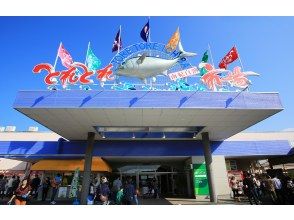
Shirahama Seafood Market "Toretore" in Waka Shirahama is the largest seafood market in Western Japan, where fresh seafood from Shirahama is gathered. A tuna cutting show is held here two to three times a day (11:00-14:00) (please understand that the tuna cutting show may be canceled due to circumstances). A huge tuna can be cut up with just one knife. The cutting was completed neatly in an instant. During the performance, the young master paid equal attention to technique and entertainment, sometimes letting out uncontrollable exclamations of admiration. These are things you won't see very often anywhere else. The tourist fish market operated in a complex not only offers fresh seafood, but also a wide selection of souvenirs and processed products that you can buy and enjoy at home, making it an essential tourist market for any trip to Shirahama, Wakayama Prefecture.

Shirahama Hot Springs Shirahama Onsen in Wakayama Prefecture is counted as one of the "Three Oldest Hot Springs in Japan" along with Arima Onsen (Hyogo Prefecture) and Dogo Onsen (Ehime Prefecture). It has been known as "Kero Onsen" and "Kino Onsen" since the Asuka and Nara periods, and its beautiful white sand beaches are also mentioned in the "Nihon Shoki" and "Manyoshu". It is a super hot spring resort with a history of over 1,350 years, and was once visited by many emperors and nobles. Shirahama Onsen is also known as one of the "Three Great Hot Springs in Japan" along with Beppu Onsen and Atami Onsen, and is home to Japan's first salt brick rock bath, with a sodium bicarbonate spring.
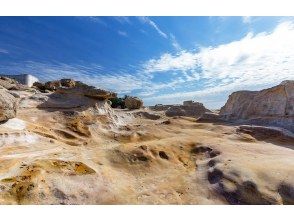
Senjojiki Senjojiki is a sandstone geology located on the west coast of Shirahama City, Wakayama Prefecture, which has been eroded by the Pacific Ocean over the years to form a complex topography. Mutually. The total area of this coast is about 4 hectares, equivalent to 1,000 tatami mats, so it is called "Senjojiki". Along with Sandanbeki and Engetsuto Island, it is a famous spot in Shirahama. Senjojiki is a beautiful sunset spot that can be seen slowly sinking into the Pacific Ocean when the weather is good, and has been selected as one of the "100 Best Sunsets in Japan". In addition, it is located in a secluded place, has a unique undulating topography, and the waves of the Pacific Ocean crashing on the shore, and watching the sunset here makes you feel like you are at the end of the world.
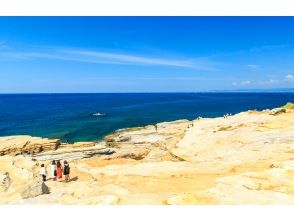
Senjojiki Senjojiki is a sandstone geology located on the west coast of Shirahama City, Wakayama Prefecture, which has been eroded by the Pacific Ocean over the years to form a complex topography. Mutually. The total area of this coast is about 4 hectares, equivalent to 1,000 tatami mats, so it is called "Senjojiki". Along with Sandanbeki and Engetsuto Island, it is a famous spot in Shirahama. Senjojiki is a beautiful sunset spot that can be seen slowly sinking into the Pacific Ocean when the weather is good, and has been selected as one of the "100 Best Sunsets in Japan". In addition, it is located in a secluded place, has a unique undulating topography, and the waves of the Pacific Ocean crashing on the shore, and watching the sunset here makes you feel like you are at the end of the world.

Senjojiki Senjojiki is a sandstone geology located on the west coast of Shirahama City, Wakayama Prefecture, which has been eroded by the Pacific Ocean over the years to form a complex topography. Mutually. The total area of this coast is about 4 hectares, equivalent to 1,000 tatami mats, so it is called "Senjojiki". Along with Sandanbeki and Engetsuto Island, it is a famous spot in Shirahama. Senjojiki is a beautiful sunset spot that can be seen slowly sinking into the Pacific Ocean when the weather is good, and has been selected as one of the "100 Best Sunsets in Japan". In addition, it is located in a secluded place, has a unique undulating topography, and the waves of the Pacific Ocean crashing on the shore, and watching the sunset here makes you feel like you are at the end of the world.
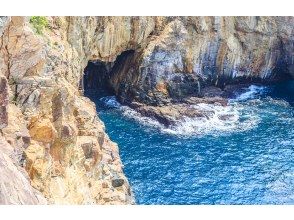
Three sections of wall The three walls are part of Kumano National Park, a scenic spot in Shirahama, and a sacred place for lovers. Sandanbeki is a famous cliff on the coast of Shirahama Town, Nishimuro District, Wakayama Prefecture. The Sandanbeki is actually a large rock wall that is 2 kilometers long and 50 to 60 meters high, located in the sea. At the end of the cliff, there is an observation deck where you can enjoy the sea view of Nankichi. The cliff here is not only a spectacular natural landscape, but various historical events have happened under the cliff for centuries. (During the Heian period (794-1185), local pirates who plundered the area hid in a triple-walled cave.) There is a cave eroded by seawater 36 meters underground, and you can take an elevator to see inside. Imagine yourself as Captain Jack Sparrow in the modern day, taking the elevator down to the 36-meter-deep cave and exploring its dank, dark passages. The cave is filled with various relics and replicas relating to pirate activities, as well as a variety of other incredible traces left by natural erosion.
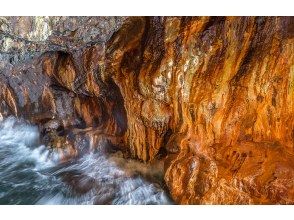
Three sections of wall The three walls are part of Kumano National Park, a scenic spot in Shirahama, and a sacred place for lovers. Sandanbeki is a famous cliff on the coast of Shirahama Town, Nishimuro District, Wakayama Prefecture. The Sandanbeki is actually a large rock wall that is 2 kilometers long and 50 to 60 meters high, located in the sea. At the end of the cliff, there is an observation deck where you can enjoy the sea view of Nankichi. The cliff here is not only a spectacular natural landscape, but various historical events have happened under the cliff for centuries. (During the Heian period (794-1185), local pirates who plundered the area hid in a triple-walled cave.) There is a cave eroded by seawater 36 meters underground, and you can take an elevator to see inside. Imagine yourself as Captain Jack Sparrow in the modern day, taking the elevator down to the 36-meter-deep cave and exploring its dank, dark passages. The cave is filled with various relics and replicas relating to pirate activities, as well as a variety of other incredible traces left by natural erosion.
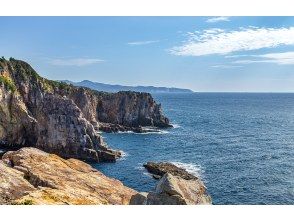
Three sections of wall The three walls are part of Kumano National Park, a scenic spot in Shirahama, and a sacred place for lovers. Sandanbeki is a famous cliff on the coast of Shirahama Town, Nishimuro District, Wakayama Prefecture. The Sandanbeki is actually a large rock wall that is 2 kilometers long and 50 to 60 meters high, located in the sea. At the end of the cliff, there is an observation deck where you can enjoy the sea view of Nankichi. The cliff here is not only a spectacular natural landscape, but various historical events have happened under the cliff for centuries. (During the Heian period (794-1185), local pirates who plundered the area hid in a triple-walled cave.) There is a cave eroded by seawater 36 meters underground, and you can take an elevator to see inside. Imagine yourself as Captain Jack Sparrow in the modern day, taking the elevator down to the 36-meter-deep cave and exploring its dank, dark passages. The cave is filled with various relics and replicas relating to pirate activities, as well as a variety of other incredible traces left by natural erosion.

Three sections of wall The three walls are part of Kumano National Park, a scenic spot in Shirahama, and a sacred place for lovers. Sandanbeki is a famous cliff on the coast of Shirahama Town, Nishimuro District, Wakayama Prefecture. The Sandanbeki is actually a large rock wall that is 2 kilometers long and 50 to 60 meters high, located in the sea. At the end of the cliff, there is an observation deck where you can enjoy the sea view of Nankichi. The cliff here is not only a spectacular natural landscape, but various historical events have happened under the cliff for centuries. (During the Heian period (794-1185), local pirates who plundered the area hid in a triple-walled cave.) There is a cave eroded by seawater 36 meters underground, and you can take an elevator to see inside. Imagine yourself as Captain Jack Sparrow in the modern day, taking the elevator down to the 36-meter-deep cave and exploring its dank, dark passages. The cave is filled with various relics and replicas relating to pirate activities, as well as a variety of other incredible traces left by natural erosion.
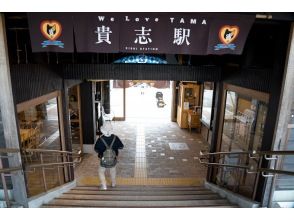
Kishi Station Famous for its cat stationmaster, Kishi Station became an unmanned station in 2006 after the Kishigawa Line was transferred to the local third-sector railway company Wakayama Electric Railway, in order to promote the use of local lines. To promote tourism in the surrounding area, an 8-year-old calico cat named Kodama, raised by the Oyama Shoten shop attached to the station, became the stationmaster of Kishi Station, which became a hot topic. Meanwhile. Xiaoyu (who passed away in June 2015) is currently working with the second cat stationmaster, Elyu. In addition to the three special trains on the entire line, Xiaoyu, Strawberry, and Toy, the station also has a Meow Cafe, Meow Seal, and Meow House. The old small station is beautifully decorated and sells all kinds of cute peripherals, making it a must-see spot for cat lovers.
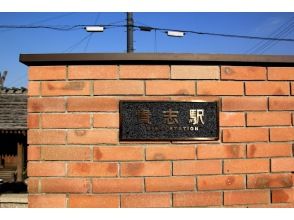
Kishi Station Famous for its cat stationmaster, Kishi Station became an unmanned station in 2006 after the Kishigawa Line was transferred to the local third-sector railway company Wakayama Electric Railway, in order to promote the use of local lines. To promote tourism in the surrounding area, an 8-year-old calico cat named Kodama, raised by the Oyama Shoten shop attached to the station, became the stationmaster of Kishi Station, which became a hot topic. Meanwhile. Xiaoyu (who passed away in June 2015) is currently working with the second cat stationmaster, Elyu. In addition to the three special trains on the entire line, Xiaoyu, Strawberry, and Toy, the station also has a Meow Cafe, Meow Seal, and Meow House. The old small station is beautifully decorated and sells all kinds of cute peripherals, making it a must-see spot for cat lovers.
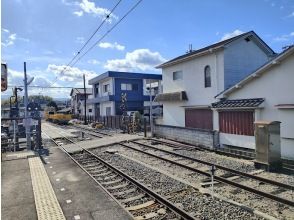
Kishi Station Famous for its cat stationmaster, Kishi Station became an unmanned station in 2006 after the Kishigawa Line was transferred to the local third-sector railway company Wakayama Electric Railway, in order to promote the use of local lines. To promote tourism in the surrounding area, an 8-year-old calico cat named Kodama, raised by the Oyama Shoten shop attached to the station, became the stationmaster of Kishi Station, which became a hot topic. Meanwhile. Xiaoyu (who passed away in June 2015) is currently working with the second cat stationmaster, Elyu. In addition to the three special trains on the entire line, Xiaoyu, Strawberry, and Toy, the station also has a Meow Cafe, Meow Seal, and Meow House. The old small station is beautifully decorated and sells all kinds of cute peripherals, making it a must-see spot for cat lovers.
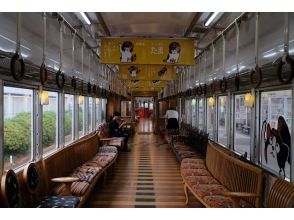
Kishi Station Famous for its cat stationmaster, Kishi Station became an unmanned station in 2006 after the Kishigawa Line was transferred to the local third-sector railway company Wakayama Electric Railway, in order to promote the use of local lines. To promote tourism in the surrounding area, an 8-year-old calico cat named Kodama, raised by the Oyama Shoten shop attached to the station, became the stationmaster of Kishi Station, which became a hot topic. Meanwhile. Xiaoyu (who passed away in June 2015) is currently working with the second cat stationmaster, Elyu. In addition to the three special trains on the entire line, Xiaoyu, Strawberry, and Toy, the station also has a Meow Cafe, Meow Seal, and Meow House. The old small station is beautifully decorated and sells all kinds of cute peripherals, making it a must-see spot for cat lovers.

Kishi Station Famous for its cat stationmaster, Kishi Station became an unmanned station in 2006 after the Kishigawa Line was transferred to the local third-sector railway company Wakayama Electric Railway, in order to promote the use of local lines. To promote tourism in the surrounding area, an 8-year-old calico cat named Kodama, raised by the Oyama Shoten shop attached to the station, became the stationmaster of Kishi Station, which became a hot topic. Meanwhile. Xiaoyu (who passed away in June 2015) is currently working with the second cat stationmaster, Elyu. In addition to the three special trains on the entire line, Xiaoyu, Strawberry, and Toy, the station also has a Meow Cafe, Meow Seal, and Meow House. The old small station is beautifully decorated and sells all kinds of cute peripherals, making it a must-see spot for cat lovers.
Time schedule
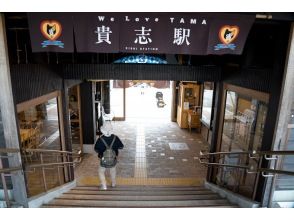
Kishi Station Famous for its cat stationmaster, Kishi Station became an unmanned station in 2006 after the Kishigawa Line was transferred to the local third-sector railway company Wakayama Electric Railway, in order to promote the use of local lines. To promote tourism in the surrounding area, an 8-year-old calico cat named Kodama, raised by the Oyama Shoten shop attached to the station, became the stationmaster of Kishi Station, which became a hot topic. Meanwhile. Xiaoyu (who passed away in June 2015) is currently working with the second cat stationmaster, Elyu. In addition to the three special trains on the entire line, Xiaoyu, Strawberry, and Toy, the station also has a Meow Cafe, Meow Seal, and Meow House. The old small station is beautifully decorated and sells all kinds of cute peripherals, making it a must-see spot for cat lovers.
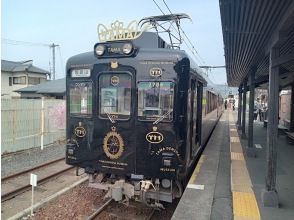
Kishi Station Famous for its cat stationmaster, Kishi Station became an unmanned station in 2006 after the Kishigawa Line was transferred to the local third-sector railway company Wakayama Electric Railway, in order to promote the use of local lines. To promote tourism in the surrounding area, an 8-year-old calico cat named Kodama, raised by the Oyama Shoten shop attached to the station, became the stationmaster of Kishi Station, which became a hot topic. Meanwhile. Xiaoyu (who passed away in June 2015) is currently working with the second cat stationmaster, Elyu. In addition to the three special trains on the entire line, Xiaoyu, Strawberry, and Toy, the station also has a Meow Cafe, Meow Seal, and Meow House. The old small station is beautifully decorated and sells all kinds of cute peripherals, making it a must-see spot for cat lovers.
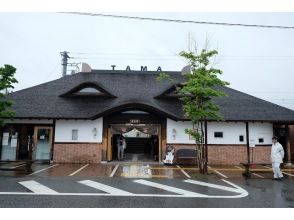
Kishi Station Famous for its cat stationmaster, Kishi Station became an unmanned station in 2006 after the Kishigawa Line was transferred to the local third-sector railway company Wakayama Electric Railway, in order to promote the use of local lines. To promote tourism in the surrounding area, an 8-year-old calico cat named Kodama, raised by the Oyama Shoten shop attached to the station, became the stationmaster of Kishi Station, which became a hot topic. Meanwhile. Xiaoyu (who passed away in June 2015) is currently working with the second cat stationmaster, Elyu. In addition to the three special trains on the entire line, Xiaoyu, Strawberry, and Toy, the station also has a Meow Cafe, Meow Seal, and Meow House. The old small station is beautifully decorated and sells all kinds of cute peripherals, making it a must-see spot for cat lovers.
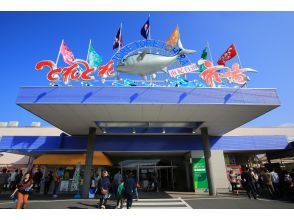
Shirahama Toreto Market "Toretore" in Waka Shirahama is the largest seafood market in Western Japan, where fresh seafood from Shirahama is gathered. A tuna cutting show is held here two to three times a day (11:00-14:00) (please understand that the tuna cutting show may be canceled due to circumstances). A huge tuna can be cut up with just one knife. The cutting was completed neatly in an instant. During the performance, the young master paid equal attention to technique and entertainment, sometimes letting out uncontrollable exclamations of admiration. These are things you won't see very often anywhere else. The tourist fish market operated in a complex not only offers fresh seafood, but also a wide selection of souvenirs and processed products that you can buy and enjoy at home, making it an essential tourist market for any trip to Shirahama, Wakayama Prefecture.
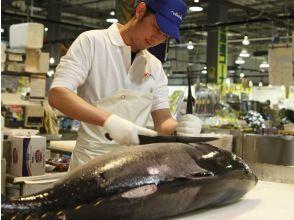
Shirahama Toreto Market "Toretore" in Waka Shirahama is the largest seafood market in Western Japan, where fresh seafood from Shirahama is gathered. A tuna cutting show is held here two to three times a day (11:00-14:00) (please understand that the tuna cutting show may be canceled due to circumstances). A huge tuna can be cut up with just one knife. The cutting was completed neatly in an instant. During the performance, the young master paid equal attention to technique and entertainment, sometimes letting out uncontrollable exclamations of admiration. These are things you won't see very often anywhere else. The tourist fish market operated in a complex not only offers fresh seafood, but also a wide selection of souvenirs and processed products that you can buy and enjoy at home, making it an essential tourist market for any trip to Shirahama, Wakayama Prefecture.
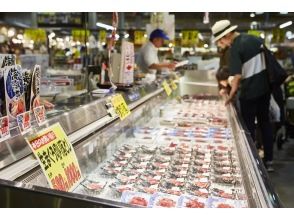
Shirahama Toreto Market "Toretore" in Waka Shirahama is the largest seafood market in Western Japan, where fresh seafood from Shirahama is gathered. A tuna cutting show is held here two to three times a day (11:00-14:00) (please understand that the tuna cutting show may be canceled due to circumstances). A huge tuna can be cut up with just one knife. The cutting was completed neatly in an instant. During the performance, the young master paid equal attention to technique and entertainment, sometimes letting out uncontrollable exclamations of admiration. These are things you won't see very often anywhere else. The tourist fish market operated in a complex not only offers fresh seafood, but also a wide selection of souvenirs and processed products that you can buy and enjoy at home, making it an essential tourist market for any trip to Shirahama, Wakayama Prefecture.
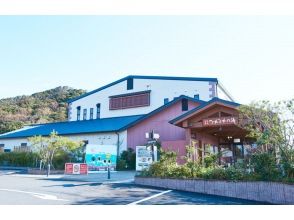
Toretore Onsen Shirahama Onsen in Wakayama Prefecture is counted as one of the "Three Oldest Hot Springs in Japan" along with Arima Onsen (Hyogo Prefecture) and Dogo Onsen (Ehime Prefecture). It has been known as "Kero Onsen" and "Kino Onsen" since the Asuka and Nara periods, and its beautiful white sand beaches are also mentioned in the "Nihon Shoki" and "Manyoshu". It is a super hot spring resort with a history of over 1,350 years, and was once visited by many emperors and nobles. Shirahama Onsen is also known as one of the "Three Great Hot Springs in Japan" along with Beppu Onsen and Atami Onsen, and is home to Japan's first salt brick rock bath, with a sodium bicarbonate spring.
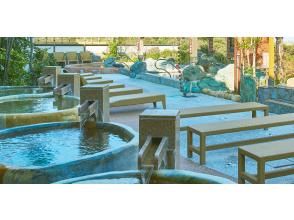
Toretore Onsen Shirahama Onsen in Wakayama Prefecture is counted as one of the "Three Oldest Hot Springs in Japan" along with Arima Onsen (Hyogo Prefecture) and Dogo Onsen (Ehime Prefecture). It has been known as "Kero Onsen" and "Kino Onsen" since the Asuka and Nara periods, and its beautiful white sand beaches are also mentioned in the "Nihon Shoki" and "Manyoshu". It is a super hot spring resort with a history of over 1,350 years, and was once visited by many emperors and nobles. Shirahama Onsen is also known as one of the "Three Great Hot Springs in Japan" along with Beppu Onsen and Atami Onsen, and is home to Japan's first salt brick rock bath, with a sodium bicarbonate spring.
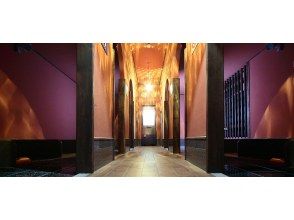
Toretore Onsen Shirahama Onsen in Wakayama Prefecture is counted as one of the "Three Oldest Hot Springs in Japan" along with Arima Onsen (Hyogo Prefecture) and Dogo Onsen (Ehime Prefecture). It has been known as "Kero Onsen" and "Kino Onsen" since the Asuka and Nara periods, and its beautiful white sand beaches are also mentioned in the "Nihon Shoki" and "Manyoshu". It is a super hot spring resort with a history of over 1,350 years, and was once visited by many emperors and nobles. Shirahama Onsen is also known as one of the "Three Great Hot Springs in Japan" along with Beppu Onsen and Atami Onsen, and is home to Japan's first salt brick rock bath, with a sodium bicarbonate spring.
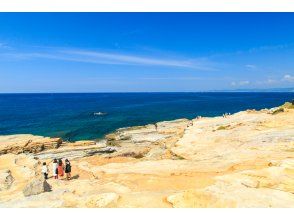
Senjojiki Senjojiki is a sandstone geology located on the west coast of Shirahama City, Wakayama Prefecture, which has been eroded by the Pacific Ocean over the years to form a complex topography. Mutually. The total area of this coast is about 4 hectares, equivalent to 1,000 tatami mats, so it is called "Senjojiki". Along with Sandanbeki and Engetsuto Island, it is a famous spot in Shirahama. Senjojiki is a beautiful sunset spot that can be seen slowly sinking into the Pacific Ocean when the weather is good, and has been selected as one of the "100 Best Sunsets in Japan". In addition, it is located in a secluded place, has a unique undulating topography, and the waves of the Pacific Ocean crashing on the shore, and watching the sunset here makes you feel like you are at the end of the world.
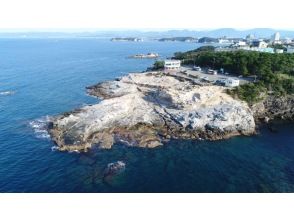
Senjojiki Senjojiki is a sandstone geology located on the west coast of Shirahama City, Wakayama Prefecture, which has been eroded by the Pacific Ocean over the years to form a complex topography. Mutually. The total area of this coast is about 4 hectares, equivalent to 1,000 tatami mats, so it is called "Senjojiki". Along with Sandanbeki and Engetsuto Island, it is a famous spot in Shirahama. Senjojiki is a beautiful sunset spot that can be seen slowly sinking into the Pacific Ocean when the weather is good, and has been selected as one of the "100 Best Sunsets in Japan". In addition, it is located in a secluded place, has a unique undulating topography, and the waves of the Pacific Ocean crashing on the shore, and watching the sunset here makes you feel like you are at the end of the world.
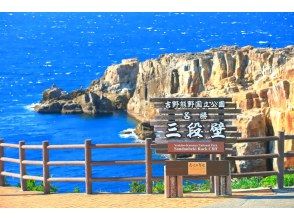
Three sections of wall The three walls are part of Kumano National Park, a scenic spot in Shirahama, and a sacred place for lovers. Sandanbeki is a famous cliff on the coast of Shirahama Town, Nishimuro District, Wakayama Prefecture. The Sandanbeki is actually a large rock wall that is 2 kilometers long and 50 to 60 meters high, located in the sea. At the end of the cliff, there is an observation deck where you can enjoy the sea view of Nankichi. The cliff here is not only a spectacular natural landscape, but various historical events have happened under the cliff for centuries. (During the Heian period (794-1185), local pirates who plundered the area hid in a triple-walled cave.) There is a cave eroded by seawater 36 meters underground, and you can take an elevator to see inside. Imagine yourself as Captain Jack Sparrow in the modern day, taking the elevator down to the 36-meter-deep cave and exploring its dank, dark passages. The caves are filled with various relics and replicas of pirate activity, as well as other fascinating evidence left by natural erosion. Tickets are required for entry.
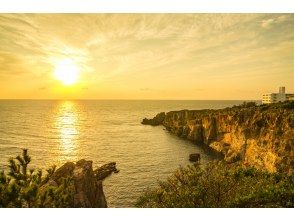
Three sections of wall The three walls are part of Kumano National Park, a scenic spot in Shirahama, and a sacred place for lovers. Sandanbeki is a famous cliff on the coast of Shirahama Town, Nishimuro District, Wakayama Prefecture. The Sandanbeki is actually a large rock wall that is 2 kilometers long and 50 to 60 meters high, located in the sea. At the end of the cliff, there is an observation deck where you can enjoy the sea view of Nankichi. The cliff here is not only a spectacular natural landscape, but various historical events have happened under the cliff for centuries. (During the Heian period (794-1185), local pirates who plundered the area hid in a triple-walled cave.) There is a cave eroded by seawater 36 meters underground, and you can take an elevator to see inside. Imagine yourself as Captain Jack Sparrow in the modern day, taking the elevator down to the 36-meter-deep cave and exploring its dank, dark passages. The caves are filled with various relics and replicas of pirate activity, as well as other fascinating evidence left by natural erosion. Tickets are required for entry.
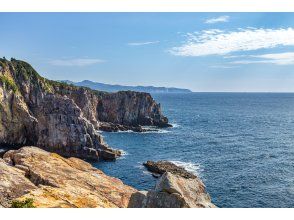
Three sections of wall The three walls are part of Kumano National Park, a scenic spot in Shirahama, and a sacred place for lovers. Sandanbeki is a famous cliff on the coast of Shirahama Town, Nishimuro District, Wakayama Prefecture. The Sandanbeki is actually a large rock wall that is 2 kilometers long and 50 to 60 meters high, located in the sea. At the end of the cliff, there is an observation deck where you can enjoy the sea view of Nankichi. The cliff here is not only a spectacular natural landscape, but various historical events have happened under the cliff for centuries. (During the Heian period (794-1185), local pirates who plundered the area hid in a triple-walled cave.) There is a cave eroded by seawater 36 meters underground, and you can take an elevator to see inside. Imagine yourself as Captain Jack Sparrow in the modern day, taking the elevator down to the 36-meter-deep cave and exploring its dank, dark passages. The caves are filled with various relics and replicas of pirate activity, as well as other fascinating evidence left by natural erosion. Tickets are required for entry.
Access - Map
Pick-up at the meeting point: 8:40 Nihonbashi Station Exit 2 (Namba-Shinsaibashi area) Pick-up at hotel/private inn: 07:30-08:30 Hotels/private inns within the Osaka Loop Line
All reviews 0Results
Q&A about this plan Ask question about this plan
Activity Provider of this plan
Selling points regarding safety
Application conditionsIf you are in poor health, use a wheelchair or other device, have a mental or physical disability, have an allergy to animals, are pregnant, or may be pregnant, or have a guide dog for the physically disabled (guide dog, hearing dog, or assistance dog), or require other special consideration, please inform us of your need for special consideration when applying. We will comply with your request to the extent possible and reasonable. In this case, you will be responsible for the costs of any special measures we take for you based on your request.
| Authorization issued by | Shizuoka Prefectural Governor Registration Travel Industry No. 2-633 |
|---|---|
| Insurance information | ANTA Liability insurance 5 million yen |
| License and Qualifications | The guide has a tour guide license. |
| Member organizations and associations | Travel Agency Registered by Shizuoka Prefecture Governor No. 2-633 JATA Japan Association of Travel Agents |
| Number of staff | 25 people |
| Number of instructors | 1 people |
![SALE! [Day trip/Pick-up from city hotels] Nanki Shirahama Onsen/Popular cat stationmaster--Kishi Station/Senjojikiの紹介画像](https://img.activityjapan.com/10/55508/10000005550801_P3BiVCAd_4.jpg?version=1722483301)
![SALE! [Day trip/Pick-up from city hotels] Nanki Shirahama Onsen/Popular cat stationmaster--Kishi Station/Senjojikiの紹介画像](https://img.activityjapan.com/11/55508/11000005550802_P3BiVCAd_4.jpg?version=1722483301)
![SALE! [Day trip/Pick-up from city hotels] Nanki Shirahama Onsen/Popular cat stationmaster--Kishi Station/Senjojikiの紹介画像](https://img.activityjapan.com/11/55508/11000005550803_P3BiVCAd_4.jpg?version=1722483301)
![SALE! [Day trip/Pick-up from city hotels] Nanki Shirahama Onsen/Popular cat stationmaster--Kishi Station/Senjojikiの紹介画像](https://img.activityjapan.com/11/55508/11000005550804_P3BiVCAd_4.jpg?version=1722483301)
![SALE! [Day trip/Pick-up from city hotels] Nanki Shirahama Onsen/Popular cat stationmaster--Kishi Station/Senjojikiの紹介画像](https://img.activityjapan.com/11/55508/11000005550805_P3BiVCAd_4.jpg?version=1722483301)
![SALE! [Day trip/Pick-up from city hotels] Nanki Shirahama Onsen/Popular cat stationmaster--Kishi Station/Senjojikiの紹介画像](https://img.activityjapan.com/11/55508/11000005550806_P3BiVCAd_4.jpg?version=1722483302)
![SALE! [Day trip/Pick-up from city hotels] Nanki Shirahama Onsen/Popular cat stationmaster--Kishi Station/Senjojikiの紹介画像](https://img.activityjapan.com/11/55508/11000005550807_P3BiVCAd_4.jpg?version=1722483302)
![SALE! [Day trip/Pick-up from city hotels] Nanki Shirahama Onsen/Popular cat stationmaster--Kishi Station/Senjojikiの紹介画像](https://img.activityjapan.com/11/55508/11000005550808_P3BiVCAd_4.jpg?version=1722483302)
![SALE! [Day trip/Pick-up from city hotels] Nanki Shirahama Onsen/Popular cat stationmaster--Kishi Station/Senjojikiの紹介画像](https://img.activityjapan.com/11/55508/11000005550809_P3BiVCAd_4.jpg?version=1722483302)
![SALE! [Day trip/Pick-up from city hotels] Nanki Shirahama Onsen/Popular cat stationmaster--Kishi Station/Senjojikiの紹介画像](https://img.activityjapan.com/11/55508/11000005550810_P3BiVCAd_4.jpg?version=1722483302)
![SALE! [Day trip/Pick-up from city hotels] Nanki Shirahama Onsen/Popular cat stationmaster--Kishi Station/Senjojikiの紹介画像](https://img.activityjapan.com/11/55508/11000005550811_P3BiVCAd_4.jpg?version=1722483302)
![SALE! [Day trip/Pick-up from city hotels] Nanki Shirahama Onsen/Popular cat stationmaster--Kishi Station/Senjojikiの紹介画像](https://img.activityjapan.com/11/55508/11000005550812_P3BiVCAd_4.jpg?version=1722483302)
![SALE! [Day trip/Pick-up from city hotels] Nanki Shirahama Onsen/Popular cat stationmaster--Kishi Station/Senjojikiの紹介画像](https://img.activityjapan.com/11/55508/11000005550813_P3BiVCAd_4.jpg?version=1722483302)
![SALE! [Day trip/Pick-up from city hotels] Nanki Shirahama Onsen/Popular cat stationmaster--Kishi Station/Senjojikiの紹介画像](https://img.activityjapan.com/11/55508/11000005550814_P3BiVCAd_4.jpg?version=1722483302)
![SALE! [Day trip/Pick-up from city hotels] Nanki Shirahama Onsen/Popular cat stationmaster--Kishi Station/Senjojikiの紹介画像](https://img.activityjapan.com/11/55508/11000005550815_P3BiVCAd_4.png?version=1722483311)
![SALE! [Day trip/Pick-up from city hotels] Kobe night view and outlets: Have a wonderful night!](https://img.activityjapan.com/10/55492/10000005549201_P3BiVCAd_2.jpg?version=1722482462)
![SALE! [Pick-up from city hotels] Kobe night view and city sightseeing: Have a wonderful night!](https://img.activityjapan.com/10/55624/10000005562401_P3BiVCAd_2.jpg?version=1728880325)
![SALE! [Day trip] Kobe night view and city sightseeing: Have a wonderful night!](https://img.activityjapan.com/10/55503/10000005550301_P3BiVCAd_2.jpg?version=1728880384)
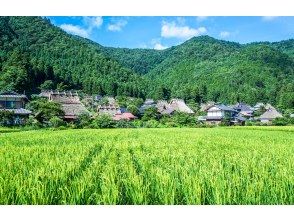
![SALE! [Oita Tourism] Yufuin/Kyushu Natural Zoo/Zoo/Umi Jigoku/Kajigoku/Trip with children (Departing from Fukuoka)](https://img.activityjapan.com/10/56283/10000005628301_P3BiVCAd_2.jpg?version=1726646525)
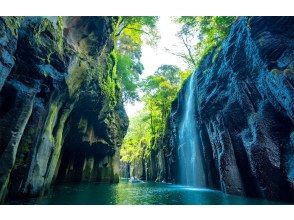
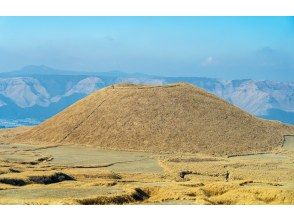
![SALE! [Day trip/Pick-up from city hotels] Popular tour of the whirlpools of Awaji Island and Naruto](https://img.activityjapan.com/10/55719/10000005571901_P3BiVCAd_2.jpg?version=1723014424)
![SALE! [Day trip/Pick-up from city hotels] MIHO MUSEUM, Lake Biwa Torii](https://img.activityjapan.com/10/55718/10000005571801_P3BiVCAd_2.jpg?version=1723011666)
![SALE! [Day trip] Mt. Fuji B course: Mt. Fuji, Lake Kawaguchi, Lake Yamanaka, hot springs](https://img.activityjapan.com/10/55455/10000005545501_P3BiVCAd_2.jpg?version=1727762102)
![[Wakayama / Shirahama] Dinner buffet + bathing ◆ Enjoy a buffet of 100 items! Shirahama Onsen is warm both physically and mentally ♪](https://img.activityjapan.com/10/39052/10000003905201_FKCeYJyS_2.JPG?version=1636777144)
![[Wakayama/ Shirahama] Let's explore the night cave ♪ | Starry cave night walk](https://img.activityjapan.com/10/46750/10000004675001_blbP73C1_2.jpg?version=1681195202)
![[Wakayama / Shirahama] Lunch buffet + bathing ◆ Enjoy a 70-item buffet! Shirahama Onsen is warm both physically and mentally ♪](https://img.activityjapan.com/10/39049/10000003904901_FKCeYJyS_2.JPG?version=1636777085)
![[Wakayama / Shirahama] Lunch buffet at Nanki Shirahama ◆ Enjoy a buffet of 70 items in a beautiful view of the Pacific Ocean ♪](https://img.activityjapan.com/10/39048/10000003904801_FKCeYJyS_2.JPG?version=1636354027)
![[Wakayama / Shirahama] 2 boat diving | Lunch included | Anyone with a C card is welcome ♪](https://img.activityjapan.com/10/39012/10000003901201_dfeW94H4_2.jpeg?version=1636185006)
![[Wakayama / Shirahama] << * ◆ Shirahama Undersea Observatory ◆ * >> It feels like you are taking a walk on the seabed! ?? Let's take a peek at the fish swimming gracefully from the sea at a depth of 8m ♪](https://img.activityjapan.com/10/39050/10000003905001_FKCeYJyS_2.jpg?version=1636338186)